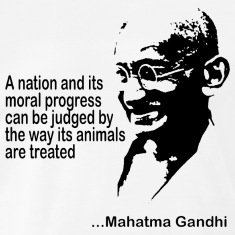Dr.Miftahul Islam Barbaruah
Differentiation has been the common approach for mankind to understand complex problems. In our country, there has been extensive use of this approach. In order to understand the agriculture related issues deeply and ensure focused action, we have made investments in differentiated areas of agriculture. Most of these investments have resulted in a robust network of government and private institutions, each specializing on various aspects. There are numerous government institutions within the agriculture and allied sector. In Assam alone we have five line departments, two supporting departments, one registered society (to implement World Bank project), two public sector corporations, eight commodity-based agencies or boards, twenty extension centers (funded directly by the Indian Council of Agricultural Research), two export and marketing organizations, etc. Coordinating and making these institutions work on a synergistic manner is a challenge for the government. Most of these institutions are taking up innumerable programs. However, a number of problems at macro level are yet to be fully understood or solved. Agricultural productivity and growth in rain fed areas, paradox of hunger Vis a Vis rotten grain in government godowns, existence of malnutrition, poor food safety standards, environmental sustainability, climate change, transmissible and trans-boundary diseases, water use are some of the areas.
As far as North Eastern states are concerned, we are also facing the challenge of limited local capacity to plan and implement sustainable programs (NE Vision 2020, GOI). Agricultural planning in the context of North East India has its own connotation. Multiple agro-climatic divisions across the region accentuate the importance of zonal / local planning for agricultural interventions. The unique biodiversity of the region and the need for its conservation makes elaborate ecological analysis mandatory before any intervention. Being a politically sensitive region, it is also necessary for any development agency to look for local partnerships to assess and mitigate political risks to any development intervention. It is worth mentioning that since XI plan onwards, Government of India has introduced decentralized planning in Agriculture and each states has been entrusted with the huge responsibility of utilizing the earmarked funds through various planned investments (in project mode) as per their own priorities. At the beginning of XI plan (2007-08) itself, Government of India has provided separate fund to states to prepare Comprehensive District Agriculture Plan (C-DAP) in collaboration with panchayat. A review of most of these plans for districts of North Eastern States in the current context indicates ample scope for participatory research, local debate and enhancement of existing plan documents thereof. Much also needs to be done to ensure involvement of the 3 tire planning system constituted with participation of panchayat for effective bottom up planning and monitoring of implementation.
Amongst the North Eastern states, Assam government was allocated a total sum of Rs. 1201.903 Cr from Ministry of Agriculture, Government of India during XI plan period under various agri-linked central sector schemes (including Rs.707.12 Cr for Rashtriya Krishi Vikash Yojana -a part of which is being shared with allied departments like veterinary and Fisheries). During the same plan period Assam’s state plan expenditure on Agriculture and allied sector was Rs. 2656.31 Cr (Av 8.41% of total state plan expenditure during XI plan). Looking at the fund flow and importance given to decentralize planning it is essential that we should focus on ensuring collective wisdom and enhanced skill of planning, monitoring at various levels. There is also a great scope for the states in the region to undertake a focus initiative aimed at improving the efficiency of public expenditure planning and implementation in Agriculture and allied sector.
Analysis of the situation indicates that we are good at differentiation but have not taken up sufficient initiative to integrate knowledge and offer solution for macro problems. There is inadequate engagement amongst institutions at various levels to integrate knowledge of differentiated problems. The same has reflected in inadequate local capacity for planning and implementation of sustainable integrated programs.
The mantra to augment integrated development planning is to unlock the complementary knowledge amongst the institutions. Each institution must tap the pool of knowledge outside their own institutions and collaborate, based on resources in local context.
The government can facilitate this by supporting a state or regional level think tank of select multidisciplinary people belonging to different institutions. The individual in such think tank should be given the scope to work together on designing and monitoring of programs and projects. The fact that the individuals in such think tank will get a chance also to work outside their own institutional setting (comfort zone) is a favorable condition for innovation. This will also lead to sharing of latent and tacit knowledge of individuals and institutions. The think tank can also assist government (s) in conducting periodic Agriculture Public Expenditure Review (Ag PER) and to suggest ways to improve data quality, the composition / impact of spending, budget execution and the integration of off-budget expenditures.
One of the biggest challenges to sustain such an endeavor is to develop an incentive mechanism to attract people and institutions to join and collaborate with the think tank. This incentive system can be developed through access to career enhancing leadership training, work exposures, award for innovative expression of views, ideas and networking opportunities. It will also be mandatory on the part of such think tank to dedicate itself to a participatory result framework focusing on defined impact areas such as agricultural sector growth and effective governance of agricultural service delivery.
( Images used in this post are from open source )




